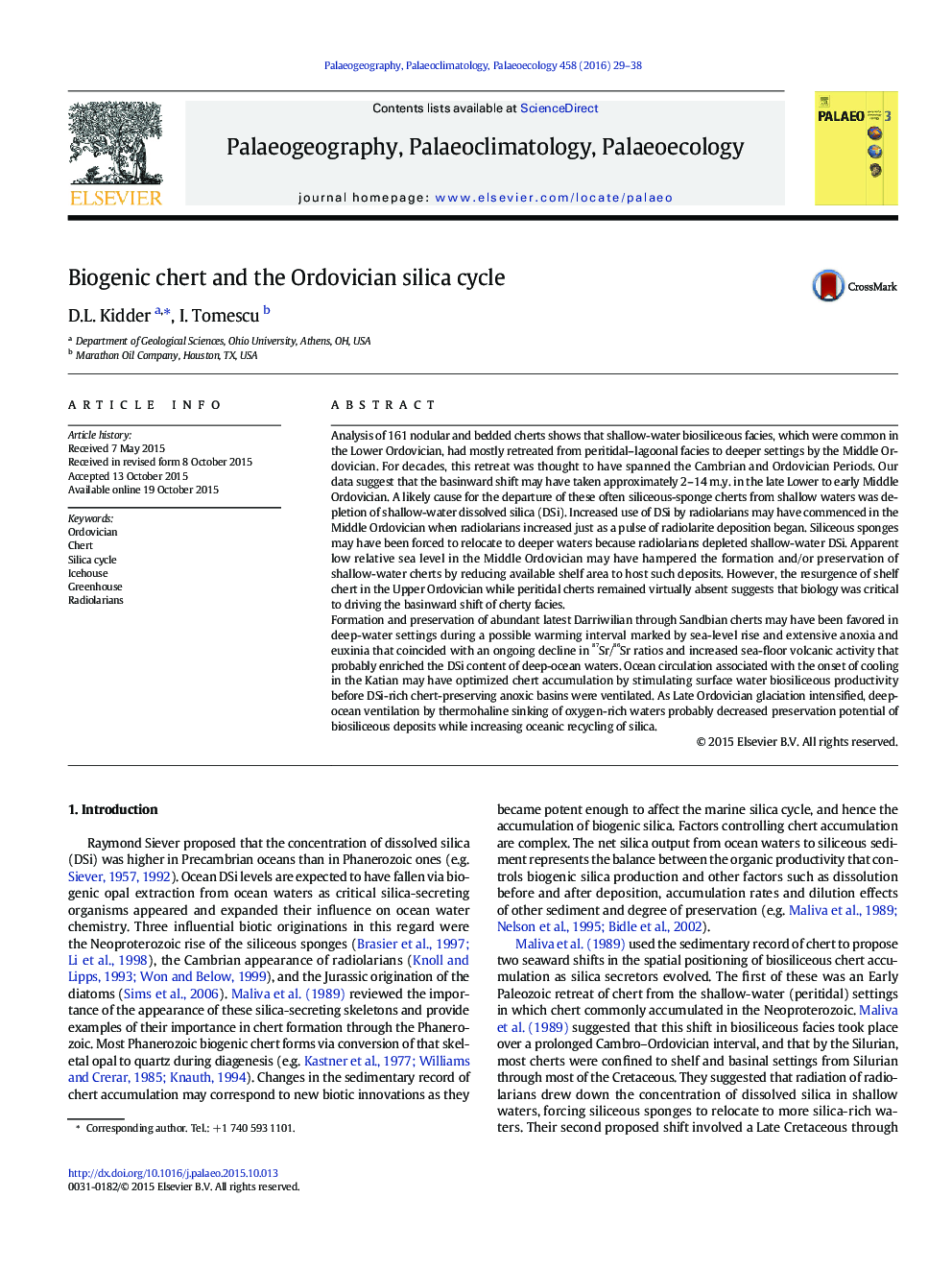| Article ID | Journal | Published Year | Pages | File Type |
|---|---|---|---|---|
| 4465578 | Palaeogeography, Palaeoclimatology, Palaeoecology | 2016 | 10 Pages |
•Biogenic cherts mostly withdrew from peritidal settings to shelves and basins in the Early to Middle Ordovician.•Increased radiolarian use of dissolved silica may have deprived shallow water siliceous sponges of needed skeletal silica.•Abundant upwelling-associated cherts may coincide with the onset of Late Ordovician cooling that led to glaciation.•Abundant Darriwilian-Sandbian cherts may have accumulated under warm greenhouse conditions that peaked in the Sandbian.•Anoxia preserved basinal greenhouse cherts before Katian ocean ventilation stimulated icehouse biosiliceous productivity.
Analysis of 161 nodular and bedded cherts shows that shallow-water biosiliceous facies, which were common in the Lower Ordovician, had mostly retreated from peritidal–lagoonal facies to deeper settings by the Middle Ordovician. For decades, this retreat was thought to have spanned the Cambrian and Ordovician Periods. Our data suggest that the basinward shift may have taken approximately 2–14 m.y. in the late Lower to early Middle Ordovician. A likely cause for the departure of these often siliceous-sponge cherts from shallow waters was depletion of shallow-water dissolved silica (DSi). Increased use of DSi by radiolarians may have commenced in the Middle Ordovician when radiolarians increased just as a pulse of radiolarite deposition began. Siliceous sponges may have been forced to relocate to deeper waters because radiolarians depleted shallow-water DSi. Apparent low relative sea level in the Middle Ordovician may have hampered the formation and/or preservation of shallow-water cherts by reducing available shelf area to host such deposits. However, the resurgence of shelf chert in the Upper Ordovician while peritidal cherts remained virtually absent suggests that biology was critical to driving the basinward shift of cherty facies.Formation and preservation of abundant latest Darriwilian through Sandbian cherts may have been favored in deep-water settings during a possible warming interval marked by sea-level rise and extensive anoxia and euxinia that coincided with an ongoing decline in 87Sr/86Sr ratios and increased sea-floor volcanic activity that probably enriched the DSi content of deep-ocean waters. Ocean circulation associated with the onset of cooling in the Katian may have optimized chert accumulation by stimulating surface water biosiliceous productivity before DSi-rich chert-preserving anoxic basins were ventilated. As Late Ordovician glaciation intensified, deep-ocean ventilation by thermohaline sinking of oxygen-rich waters probably decreased preservation potential of biosiliceous deposits while increasing oceanic recycling of silica.
